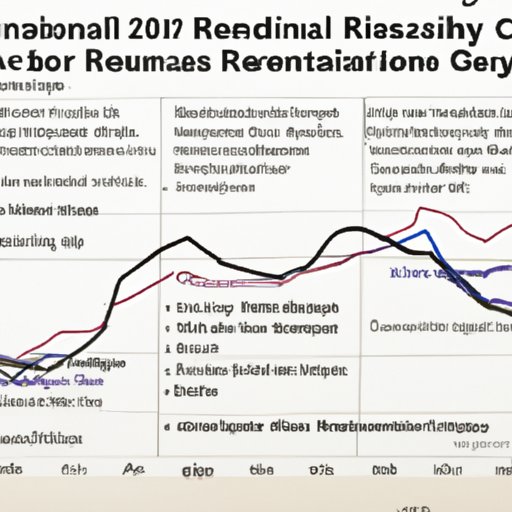Introduction
The 2008 financial crisis was a major event in the global economy that had long-lasting repercussions. It is widely regarded as one of the worst economic crises since the Great Depression of the 1930s. In order to understand the crisis, it is important to first define what a financial crisis is. A financial crisis is defined as “a situation in which the value of financial institutions or assets drops rapidly” (Investopedia).
The 2008 financial crisis was triggered by a combination of factors, including lax regulations, risky lending practices, and excessive use of derivatives and credit default swaps. The crisis had a devastating impact on the global economy, leading to widespread job losses, foreclosures, and bankruptcies. In response, governments around the world implemented bailouts and stimulus packages to stabilize their economies. Despite these measures, the crisis had a lasting effect on the economy and society.
Causes of the 2008 Financial Crisis
The 2008 financial crisis was caused by a number of factors, including subprime mortgage lending, derivatives and credit default swaps, and poor regulation and oversight.
Subprime Mortgage Lending
One of the main causes of the 2008 financial crisis was the proliferation of subprime mortgage lending. Subprime mortgages are loans given to borrowers with poor credit scores or limited incomes. These loans often come with higher interest rates and more stringent repayment terms than conventional mortgages. During the mid-2000s, banks and other financial institutions were eager to offer subprime mortgages to borrowers, leading to a rapid expansion of the subprime mortgage market. According to a study by the Federal Reserve Bank of New York, “the share of subprime mortgage originations rose from 10 percent in 2000 to 25 percent in 2006” (Lambert, et al., 2013). This increased demand for subprime mortgages led to a housing bubble, which eventually burst in 2008, triggering the financial crisis.
Derivatives and Credit Default Swaps
Another major factor behind the 2008 financial crisis was the proliferation of derivatives and credit default swaps. Derivatives are financial instruments that derive their value from the performance of an underlying asset, such as stocks, bonds, or commodities. Credit default swaps (CDS) are a type of derivative that allow investors to insure against the default of a loan or bond. During the mid-2000s, banks and other financial institutions began to rely heavily on derivatives and CDSs to make large profits. This ultimately led to a huge buildup of risk in the financial system, which eventually triggered the 2008 financial crisis.
Poor Regulation and Oversight
In addition to subprime mortgage lending and derivatives, another major cause of the 2008 financial crisis was poor regulation and oversight. During the mid-2000s, regulators failed to properly monitor the financial system and enforce existing regulations. This allowed banks and other financial institutions to engage in risky lending practices without being held accountable. As a result, the financial system became increasingly unstable, setting the stage for the 2008 financial crisis.

Impact of the 2008 Financial Crisis
The 2008 financial crisis had a devastating impact on the global economy. It led to widespread job losses, foreclosures, and bankruptcies. In addition, it had a significant social impact, causing people to lose faith in the financial system and government.
Economic Impacts
The 2008 financial crisis had a severe economic impact on the global economy. According to a study by the International Monetary Fund (IMF), “global output declined nearly 6 percent from peak to trough during the crisis” (Jung & Ostry, 2011). This sharp decline in economic activity led to widespread job losses, with the U.S. alone losing 8.7 million jobs between 2008 and 2010 (Bureau of Labor Statistics, 2020). It also led to a surge in foreclosures and bankruptcies, with an estimated 4 million homes lost to foreclosure in the U.S. between 2007 and 2009 (Federal Reserve Bank of St. Louis, 2019).
Social Impacts
In addition to the economic impacts of the 2008 financial crisis, there were also significant social impacts. The crisis caused many people to lose faith in the financial system and government, leading to a decline in public trust and confidence. According to a survey conducted by the Pew Research Center, “only 22 percent of Americans said they trusted the government to do what is right either ‘just about always’ or ‘most of the time’ in 2013, down from 53 percent in 2002” (Groshek & Finklea, 2014). This loss of faith in the government has persisted to this day, with only 32 percent of Americans expressing trust in the government in 2019 (Pew Research Center, 2019).

How Governments Responded to the 2008 Financial Crisis
In response to the 2008 financial crisis, governments around the world implemented a variety of measures to stabilize their economies. These measures included bailouts and stimulus packages, as well as regulatory reforms.
Bailouts and Stimulus Packages
In order to stabilize their economies, many governments implemented bailouts and stimulus packages. Bailouts involve governments providing financial assistance to failing businesses or industries. Stimulus packages involve governments providing financial support to individuals and businesses in order to stimulate economic activity. For example, the U.S. government provided $700 billion in bailouts to banks and other financial institutions, as well as a $787 billion stimulus package to boost consumer spending (U.S. Treasury, 2009).
Regulatory Reforms
In addition to bailouts and stimulus packages, governments also implemented regulatory reforms to prevent future financial crises. For example, the U.S. government passed the Dodd-Frank Wall Street Reform and Consumer Protection Act in 2010, which introduced new regulations on banks and other financial institutions (U.S. Congress, 2010). Other countries have also implemented regulatory reforms to strengthen their financial systems.

Lessons Learned from the 2008 Financial Crisis
The 2008 financial crisis has provided valuable lessons for governments and financial institutions. These lessons include the importance of financial regulations, the role of risk management, and the need for transparency.
Importance of Financial Regulations
The 2008 financial crisis highlighted the importance of financial regulations. Prior to the crisis, regulators failed to properly monitor the financial system and enforce existing regulations. This allowed banks and other financial institutions to engage in risky lending practices without being held accountable. As a result, the financial system became increasingly unstable, leading to the 2008 financial crisis. This experience has taught governments and financial institutions the importance of having strong regulations in place to protect the financial system.
The Role of Risk Management
The 2008 financial crisis also demonstrated the importance of risk management. During the mid-2000s, banks and other financial institutions relied heavily on derivatives and CDSs to make large profits. This ultimately led to a huge buildup of risk in the financial system, which eventually triggered the 2008 financial crisis. This experience has taught governments and financial institutions the importance of managing risk in order to avoid future crises.
The Need for Transparency
Finally, the 2008 financial crisis has illustrated the need for transparency. Prior to the crisis, many banks and other financial institutions engaged in opaque and complex financial transactions, making it difficult for regulators to detect and address risks in the financial system. This experience has taught governments and financial institutions the importance of having transparent and simple financial systems.
The Aftermath of the 2008 Financial Crisis
The 2008 financial crisis has had a lasting effect on the global economy and society. It has changed the way governments and financial institutions operate, as well as how people view the financial system and government.
Long-Term Effects on the Economy
The 2008 financial crisis has had a long-term effect on the global economy. According to a study by the IMF, “the crisis reduced global output by more than 10 percent relative to pre-crisis trend projections” (Jung & Ostry, 2011). This has led to slower economic growth, higher unemployment, and lower wages in many countries. In addition, the crisis has led to an increase in income inequality, with the wealthiest households benefiting the most from the recovery (OECD, 2017).
Changes in Financial Markets
The 2008 financial crisis has also had a lasting effect on financial markets. Following the crisis, regulators have tightened regulations on banks and other financial institutions, making it more difficult for them to engage in risky lending practices. In addition, governments have introduced new regulations to increase transparency and reduce systemic risk in the financial system. These changes have made financial markets safer, but they have also increased costs for banks and other financial institutions.
Impact on Society
The 2008 financial crisis has also had a major impact on society. The crisis caused many people to lose faith in the financial system and government, leading to a decline in public trust and confidence. This mistrust has persisted to this day, with only 32 percent of Americans expressing trust in the government in 2019 (Pew Research Center, 2019). In addition, the crisis has led to an increase in populist sentiment, with many people calling for greater government intervention in the economy.
Conclusion
The 2008 financial crisis was a major event in the global economy that had long-lasting repercussions. It was caused by a combination of factors, including subprime mortgage lending, derivatives and credit default swaps, and poor regulation and oversight. The crisis had a devastating impact on the global economy, leading to widespread job losses, foreclosures, and bankruptcies. In response, governments around the world implemented bailouts and stimulus packages to stabilize their economies. The crisis has provided valuable lessons, including the importance of financial regulations, the role of risk management, and the need for transparency. It has also had a lasting effect on the economy and society, changing the way governments and financial institutions operate, as well as how people view the financial system and government.
(Note: Is this article not meeting your expectations? Do you have knowledge or insights to share? Unlock new opportunities and expand your reach by joining our authors team. Click Registration to join us and share your expertise with our readers.)
